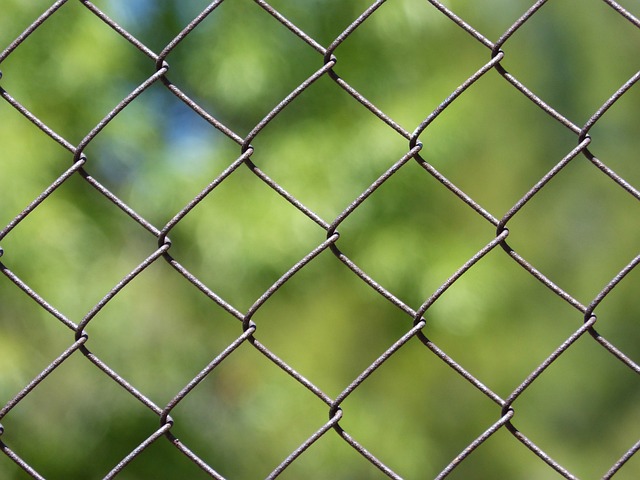In New Bedford, Massachusetts, residential fence installation has become a popular home improvement project, offering both aesthetic appeal and practical benefits. Whether you seek privacy, security, or to define your property lines, understanding your needs is crucial. This article guides homeowners through the process, from identifying suitable fence types for New Bedford’s climate and landscape to selecting reputable installation companies. We’ll explore local permits, installation best practices, and maintenance tips to ensure a durable and attractive fence for years to come.
- Understanding Residential Fence Needs in New Bedford
- Choosing the Right Installation Company
- Types of Fences for Your Home
- Permits and Regulations in MA
- The Installation Process Step-by-Step
- Maintenance Tips for Longevity
Understanding Residential Fence Needs in New Bedford
In New Bedford, residential fence installation is a significant decision that requires careful consideration of various factors unique to each property. Homeowners often seek fences for security, privacy, or aesthetic appeal, with options ranging from traditional wood and chain-link to modern vinyl and metal designs. The choice depends on personal preference, budget, and the specific needs of the property, such as protecting a pool area or defining property lines.
Understanding local regulations is also crucial before initiating any installation. New Bedford’s building codes and zoning laws may dictate fence height, materials, and placement to ensure safety and maintain harmonious neighborhood aesthetics. Homeowners should research these guidelines to avoid any legal complications during or after the installation process.
Choosing the Right Installation Company
When selecting a residential fence installation company in New Bedford, MA, it’s crucial to consider several factors. Look for companies with a proven track record and satisfied customer reviews, as this indicates their quality of work and commitment to client satisfaction. Inquire about their expertise in handling your specific type of fence, as different materials and styles require specialized knowledge and tools.
Additionally, ensure the company provides comprehensive service, from initial consultation and measurement to final installation and aftercare. Ask for references and previous projects to get a sense of their capabilities and attention to detail. A reliable installation company will also offer competitive pricing, clear cost breakdowns, and warranty information, ensuring you make an informed decision that protects your investment.
Types of Fences for Your Home
When considering residential fence installation, New Bedford homeowners have a variety of options to suit different needs and aesthetic preferences. Wood fences are a popular choice for their natural beauty and versatility. They can be customized with various styles, from picket fences ideal for defining play areas to privacy panels that offer more seclusion. Vinyl fencing is another common option known for its low maintenance and durability; it’s suitable for homeowners who want a long-lasting barrier without the need for frequent painting or sealing.
For a modern look, aluminum fences are sleek and corrosion-resistant, making them an excellent choice for contemporary properties. Chain link fences offer both security and visibility, often used for backyards with children or pets. Each type has its unique advantages, and professional installation services in New Bedford can help homeowners make informed decisions based on their specific requirements, ensuring a beautiful and functional fence that enhances their outdoor living space.
Permits and Regulations in MA
When planning to install a residential fence in New Bedford, Massachusetts, understanding local permits and regulations is crucial. The state of Massachusetts has specific laws governing property improvements, including fencing. Homeowners should check with the New Bedford Building Department or relevant authority to obtain necessary permits before starting any construction. These permits ensure that the fence installation complies with building codes, safety standards, and zoning regulations.
The permitting process typically involves submitting detailed plans of the proposed fence, including dimensions, materials used, and location. It’s important to adhere to these regulations not only for legal compliance but also to maintain property values and ensure the fence is safe and durable. Failure to obtain the required permits may result in fines or the need to remove and rebuild the fence, so it’s best to consult with local authorities early in the planning stage.
The Installation Process Step-by-Step
The residential fence installation process typically involves several well-defined steps to ensure a sturdy and aesthetically pleasing barrier. It begins with a detailed assessment by professionals who visit your property to understand your needs, the layout, and any specific requirements. They will discuss material options, styles, and designs suitable for your space, taking into account factors like privacy, security, and visual appeal.
Next, precise measurements are taken, and a permit is obtained (if required) from local authorities. The chosen fence materials—which can include wood, vinyl, iron, or other composites—are then delivered to the site. Installation proper involves setting posts securely in the ground, assembly of panels or pickets, and ensuring proper alignment and leveling. Throughout the process, experts ensure adherence to safety standards and building codes, guaranteeing a robust and long-lasting fence.
Maintenance Tips for Longevity
Regular maintenance is key to ensuring your residential fence remains durable and aesthetically pleasing over time. One simple yet effective practice is cleaning the fence regularly with a soft brush or cloth to remove dirt, leaves, and other debris that can accumulate and damage the surface. Additionally, inspecting the fence for any signs of wear, rot, or breakage should be done on a consistent basis. Addressing small issues promptly will prevent them from escalating into more costly repairs later.
Applying a fresh coat of paint or sealant every few years is another important maintenance step. This protective layer shields the fence from harsh weather conditions and UV rays, which can break down the materials over time. Lastly, making sure that the fence posts are securely anchored in the ground and that all hardware is tight will contribute to the overall stability and longevity of your residential fence installation.
